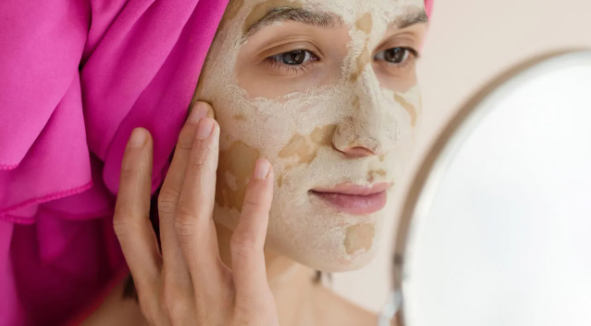Get In The World Of Face Packs: Know The Benefits Of Using Face Packs

Facial packs are a great addition to your skincare routine, offering a boost of hydration, clarifying your pores, and tending to specific skin concerns. They deliver high concentrations of potent ingredients to cater to your skin’s needs and can be an instant pick-me-up for dull, tired-looking skin, too.
Types of Face Packs
- Sheet Packs: Sheet packs blanket your skin and are super-effective and easy to use. Infused with ingredients specific to your skin ailments, they help quench your skin’s thirst and lend your epidermis a generous dose of active ingredients. Often power-packed with moisturizing ingredients such as hyaluronic acid and tea tree, they also restore your skin’s barrier and defend against free radicals.
- Peel-Off Packs: This fuss-free alternative involves peeling off the pack a few minutes after application. Often infused with salicylic and glycolic acid, they’re ideal for those with oily, acne-prone skin.
- Gel and Hydrogel Packs: Gel packs are perfect for dry skin types that crave a healthy dose of moisture. Likely imbued with aloe vera and cucumber, these masks are lightweight and soothe irritated skin.
- Clay Packs: Clay packs work by refreshing the skin and absorbing excess oil, dirt, grime, and impurities. Ideal for oily, acne-prone skin types, dry skin types should steer clear of this variant.
- Charcoal Packs: Charcoal is known to help get rid of toxins and works well to remove dirt, grime, and impurities, too.
- Mud Packs: Mud packs are perfect for a deep cleanse, often enriched with fruit extracts and acids.
When on the lookout for a suitable Face pack, bear in mind that certain ingredients could wreak havoc on your skin; keep an eye out for parabens, alcohol, fragrances, dyes, and essential oils. For those of you with sensitive skin, be careful when using over-drying ingredients and exfoliants such as salicylic acid and retinoids—for they could worsen your pre-existing skin conditions.
How To Apply a Face Pack
- Begin by cleansing your face and neck with a suitable cleanser.
- If you’re applying a sheet mask, you simply have to wear the sheet mask over your skin, with cutouts for the eyes and lips region. Allow it to sit on your face for 15-20 minutes before you take it off.
- If you’re using a peel-off mask, apply it to your face, avoiding the eyes and lips region, and peel it off after the recommended time.
- If you’re using a clay, charcoal, mud, or gel mask, apply it to your face using a brush or fingertips and rinse it off with lukewarm water after allowing it to sit on your skin for 15-20 minutes.
Benefits of Using a Face pack
- Unclogs Pores: Clay, mud, and charcoal masks are known to offer a deep cleanse, unclogging your pores and getting rid of built-up dirt, grime, and dead cells from the surface of your skin.
- Boosts Glow: Facial masks rejuvenate your skin, giving way to a more glowing, radiant complexion.
- Maximises Hydration: Replenish your skin’s moisture with a hyaluronic acid-infused sheet mask. Lending optimal hydration to your epidermis, sheet masks boost hydrating ingredients that limit moisture loss.
- Soothes Inflammation: Certain ingredients, including green tea and salicylic acid, work by calming redness and inflammation and minimizing the appearance of pimples.
Things To Bear In Mind When Masking
- Cleanse Before and Moisturise After: Consider cleansing your skin with a pH-neutral, gentle cleanser that’ll open up your pores, prepping your skin to absorb all the goodness your mask has to offer.
- Be Consistent: A one-off application of a Face pack won’t do your skin much good. Consistently use a Face pack for a few weeks to see noticeable results. You may apply a Face pack up to three times a week.
- Don’t Keep It On For Too Long: Avoid keeping the facial mask on longer than instructed, as doing so could over-dry and irritate your skin.
- Be Mindful of The Ingredients: When purchasing a facial mask, ensure that you’re double-checking the label to pick a product best suited to your skin type and concerns.
How To Pick a Face pack According To Your Skin Type
- Oily Skin Types: Oily and acne-prone skin types should look for ingredients such as salicylic acid, tea tree, glycolic acid, and benzoyl peroxide.
- Dry Skin Types: Dry skin types should look for ingredients such as hyaluronic acid and shea butter.
- Sensitive Skin Types: Sensitive skin types should look for soothing ingredients like aloe vera and green tea.
Conclusion
So buy face packs and incorporate them into your skincare routine, it’ll help address a ton of the skin concerns you have been experiencing. From unforeseen breakouts to severe dryness, the different variants of Face packs go a long way to cater to your targeted ailments; the trick is to buy wisely. Remember to cleanse your face before applying the Face pack and not let the pack sit on your skin for a prolonged period.




























